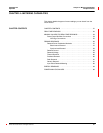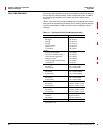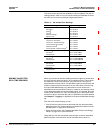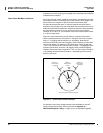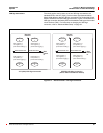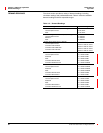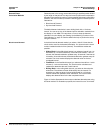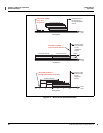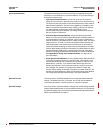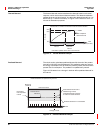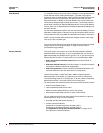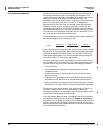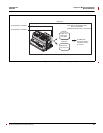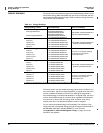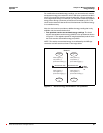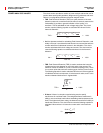
63230-300-212 Chapter 4—Metering Capabilities
April 2001 Demand Readings
59
© 2001 Schneider Electric All Rights Reserved
The demand calculations can be synchronized by accepting an external
pulse input, a command sent over communications, or by synchronizing to
the internal real-time clock.
• Input Synchronized Demand. You can set up the circuit monitor to
accept an input such as a demand synch pulse from an external source.
The circuit monitor then uses the same time interval as the other meter for
each demand calculation. You can use any digital input installed on the
meter to receive the synch pulse. When setting up this type of demand,
you select whether it will be input-synchronized block or input-
synchronized rolling block demand. The rolling block demand requires
that you choose a subinterval.
• Command Synchronized Demand. Using command synchronized
demand, you can synchronize the demand intervals of multiple meters on
a communications network. For example, if a PLC input is monitoring a
pulse at the end of a demand interval on a utility revenue meter, you could
program the PLC to issue a command to multiple meters whenever the
utility meter starts a new demand interval. Each time the command is
issued, the demand readings of each meter are calculated for the same
interval. When setting up this type of demand, you select whether it will be
command-synchronized block or command-synchronized rolling block
demand. The rolling block demand requires that you choose a subinterval.
See Appendix B—Using the Command Interface on page 181 for
more information.
• Clock Synchronized Demand. You can synchronize the demand interval
to the internal real-time clock in the circuit monitor. This enables you to
synchronize the demand to a particular time, typically on the hour. The
default time is 12:00 am. If you select another time of day when the
demand intervals are to be synchronized, the time must be in minutes
from midnight. For example, to synchronize at 8:00 am, select 480
minutes. When setting up this type of demand, you select whether it will
be clock-synchronized block or clock-synchronized rolling block demand.
The rolling block demand requires that you choose a subinterval.
The circuit monitor calculates demand current using the thermal demand
method. The default interval is 15 minutes, but you can set the demand
current interval between 1 and 60 minutes in 1-minute increments.
The circuit monitor calculates demand voltage. The default voltage demand
mode is thermal demand with a 15-minute demand interval. You can also set
the demand voltage to any of the block interval demand modes described in
“Block Interval Demand” on page 57.
Synchronized Demand
Demand Current
Demand Voltage



